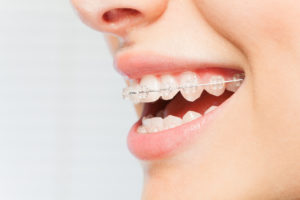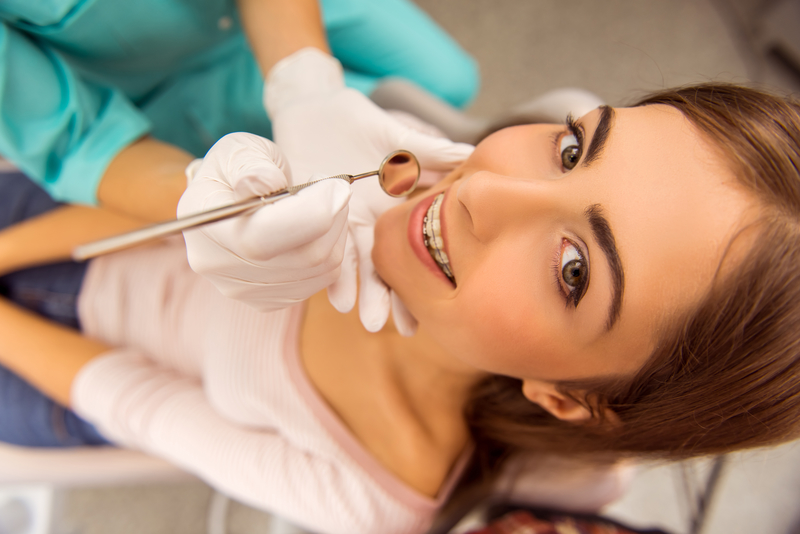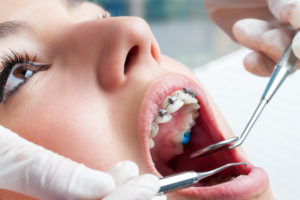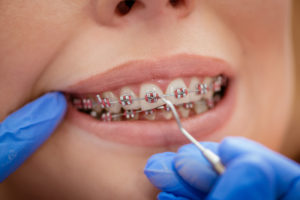Change Your Smile in 2019

Millions are ready to make changes in their life with the start of a new year. If you haven’t already, consider adding resolutions to transform your smile in 2019. This is quite easy to do if you have the right tips to get started. Whether you want a whiter smile, straighter smile or you want to change your oral health issues, you can achieve it.
Resolutions 2019
Making New Year’s resolutions is something that countless millions will do in the month of December. For many, the start of a new year is a time for reevaluating health and life goals, and a time when many recommit to goals they didn’t quite reach. Some of the top resolutions include:
- Eating healthier
- Exercising more
- Smiling more
- Saving money
- Making better health choices
- Sleeping enough
- Being social
Did you notice that oral health isn’t anywhere on the top resolutions that people make? Oral health is often overlooked because it seems like something so small compared to your overall health. However, your oral health is directly related to how healthy you are. Improvements to your smile and mouth health can improve your health and wellness.
Many chronic conditions become worse if your oral hygiene is lacking. Some include diabetes, heart disease, autoimmune disorders, and anything that has to due with your nutrition. With chronic oral health problems such as extensive tooth loss, your overall health will decline rapidly. You may not be able to eat, and chewing, biting, smiling and other basic functions will become difficult. However, most oral health issues are avoidable by simple habits done daily. You have heard of most of these habits already, as they are the basics you hear from the dentist every time you go in for a visit. However, most people can improve their technique with oral hygiene even if they are already doing the basics.

Small Changes, Big Results
Our patients either have braces on their teeth or they are looking to get them. Great oral health is needed if you want to get braces on your teeth. We make sure that our patients are free of cavities and gum issues before orthodontic treatment happens. That means, a dental visit is needed to check for any dental issues beforehand. When dental issues are there, they are fixed and great oral hygiene must be followed thereafter. That includes:
- Brushing. Brush your teeth at least twice a day with fluoride toothpaste. With braces, brush after every meal. Use a proxabrush tool or a Waterpik to dislodge stuck food. Brush in all different directions, especially with the brackets. Replace your toothbrush every 3 months or when the bristles become frayed.
- Flossing. This step is skipped often, but is so important to your smile! Flossing gets 40% of your tooth surfaces. If you want a better smile with braces, you gotta floss or that smile will be damaged. Whether you have braces or are getting them, make the decision to floss 1-2 times every day, using floss threaders or threadable floss.
- Nutrition: Skip the sugary foods as much as possible. This leads to plaque production and tooth decay. Avoid carbonated drinks or ones with citrus that leads to tooth erosion.
Continuous Oral Problems
If you brush, floss, visit the dentist and use oral health aids like mouthwash and fluoride, you may wonder why you still get cavities and gum problems. Studies show that your smile and oral health can be determined by genetics in some cases. Some genes that run in families or specific cultures can make you more susceptible to oral health diseases. For example, those of African descent have specific genes that make them more susceptible to gum disease.
If you have specific conditions that run in your family such as heart disease or diabetes, oral health problems will likely follow suit. This is not inevitable, but something you must be aware of. If you have any sort of chronic condition, make sure you are doing all that you can to have good oral hygiene habits throughout your day. If you continue to have frequent oral problems or issues with your smile, we can go over proper oral hygiene methods during one of your orthodontic appointments. Great oral hygiene and following proper techniques is very important to keeping your teeth healthy and strong, especially with braces. Sometimes, all it takes is changing up your technique or what you are eating to have better oral health and a better smile.

Cosmetic Changes to Your Smile
If you want to completely transform your smile in 2019, don’t wait to get orthodontic treatment. Studies show that getting braces is a great way to not only help you reduce your oral health problems, but an excellent way to get a better smile. Orthodontic treatment generally takes 18 months or less from start to finish. Some patients only need braces for 6 months depending on their teeth and what treatment option they choose.
There are many orthodontic options patients have to transform their smile, and half of them are invisible options. That means, you can’t see the appliances on your teeth. You have the options of:
- Traditional Metal Braces – These are the classic metal bracket and wire option that is most commonly chosen by patients.
- Ceramic Braces – These have the same bracket and wire design of metal braces, except that they are made out of white ceramic material. This helps decrease demineralization during your orthodontic treatment.
- Lingual Braces – This is a discrete metal braces option that is placed on the back of your teeth. Instead of just a square bracket, the metal must be custom-made to the shape of the back of your teeth.
- Invisalign Treatment – This is the most invisible option available to our patients. Invisalign is a series of transparent aligners that you wear at night and throughout the day. You can remove them for eating, playing sports, cleaning your teeth and more.
To choose your option today, call Belmar Orthodontics at (303) 225-9016!
Dental Care during Braces

An orthodontist has been to dental school and is skilled enough to spot gum and teeth problems. However, seeing an orthodontist is not enough to keep your teeth healthy. During your time receiving braces, it’s also important to keep seeing a dentist for cleanings, exams and dental treatments. Learn why dental care and oral hygiene is important during your time with braces and how it can help you have a better smile after your braces!
Caring for Metal Braces
Your dental care during braces will depend on the type of braces you receive. If you choose metal braces, brackets and wires in your mouth make it easier for food particles to get stuck. This quickly leads to dental issues if proper care is not taken. You have to be meticulous about cleaning away plaque and stuck food particles so that you avoid tooth decay and demineralization of your tooth enamel. You do this by:
- Brushing after every meal. Your braces easily trap food particles every single time you eat. Brushing after each meal can prevent staining and reduce the potential for bacteria buildup. When brushing, make sure you have a regular, soft-bristle brush. Brush down from the top, then up from the bottom on each tooth that has a bracket.
- Using a threadable floss or floss threader. You will quickly notice that you can’t floss the conventional way with metal braces because the archwire is in the way. If you use a floss threader, thread regular floss through the eye of the threader like you would a sewing needle and thread. Or, using threadable floss, insert the small or pointed end in between your teeth, pulling it through. Once in place between your teeth, you can floss the two teeth on either side of where you have inserted the floss, taking care not to apply force or pressure against the archwire. Repeat between all teeth.
- Using a proxabrush. This is a small brush that looks like a Christmas tree. Place the proxabrush between two brackets, below the archwire, brushing up and down. After several strokes, repeat this motion by inserting the brush from the opposite side (either down from the top or up from the bottom).

Dental Care with Other Braces
There are other types of braces besides metal braces. At our office, we also offer Invisalign, lingual braces and ceramic braces.
- Ceramic braces – Care for ceramic braces is the same as for traditional metal braces. This is because the design of these braces are the exact same, except they are made out of white, ceramic material.
- Lingual braces – These braces consist of brackets and wires that are placed on the tongue-side of your teeth (meaning behind the teeth). You will have to be more careful with brushing and flossing your teeth, as you won’t be able to see the brackets and wires as well. However, cleaning is very similar to how you would clean metal braces. With flossing, floss threaders will become your best friend, and you’ll want to be meticulous with this because food can get stuck more often with the braces being inside your mouth by your tongue.
- Invisalign – This orthodontic appliance is completely different than the other options you have. Invisalign is a series of transparent aligners that you switch out every week. The benefit of these aligners is that you can easily remove them, and brush and floss your teeth like normal. No brackets, wires or lengthy flossing session. When you take the aligners out, rinse them to get the saliva off of them. Then soak them in a retainer/braces cleaner. An example is Retainer Brite or denture cleaner.
Do You Need to See a Dentist?
Did you know that an orthodontist must complete dental school. In order to practice orthodontics, they need to complete a 4-year bachelor’s degree followed by 4 years of dental school. After that time, an orthodontist will continue 2-3 years of additional training and schooling to practice orthodontics. Therefore, an orthodontist knows what a dentist knows when it comes to your oral health. However, one point that we want to stress is that you need to continue seeing the dentist during your time with braces.
An orthodontist is skilled at treating issues with your oral health, however, an orthodontist is in charge of correcting bite and alignment. A dentist is the one that will need to correct problems with tooth decay and gum disease. Even though an orthodontist has received the same training, their profession is to not to fill cavities or do root canals unless their practice does both. During your time with braces, you must continue receiving dental care from a dentist. Braces raise your risk for tooth decay and gum disease

Dental Care during Your Time with Braces
Your dental care during braces will depend on the type of braces you receive. Many patients choose traditional metal braces for straightening their teeth. No matter what orthodontic option you choose, it is particularly important to maintain great dental care through attention to proper oral hygiene. If you don’t know what that proper hygiene routine looks like, we can help you. As always, if you have any questions about braces care or maintenance, please do not hesitate to contact our office. We are here to help you reach your goals and to keep your mouth healthy. For help caring for your braces, or if you are finding certain oral hygiene tasks difficult, call Belmar Orthodontics at (303) 225-9016!
How Braces Improve Dental Health
Did you know that braces can improve your dental health? Dental and orthodontic care go hand-in-hand. Many dentists have training to spot problems with bite and alignment. These problems can be corrected with proper orthodontic care, and should be corrected early-on before children have grown. Receiving braces as a child can correct problems that become severe later in life. Receiving braces as an adolescent and even as an adult can greatly improve your oral health, as it decreases your chances for tooth decay and even gum disease. Straighter teeth are teeth that are easier to clean and easier to take care of. Learn how investing in braces can improve your dental health today!
Braces Improve Dental Health
DId you know that orthodontists also attend dental school? Orthodontists go through 4 years of undergraduate school, then move on to 4 years of dental school. Afterwards, they must complete and additional 2-3 years of special training to perform orthodontics. Orthodontists are skilled at not only making your teeth straighter, but also helping you to improve your dental health. Dr. Hardy understands how the teeth work and that straighter teeth are teeth that have a reduced risk for cavities and problems with gum disease.
When the teeth are crooked, it can make it much harder to clean between each tooth thoroughly each day. To keep a healthy mouth, every single day counts and plaque must be removed with frequent brushing and flossing. What if the crookedness of the teeth prevent your toothbrush or floss from reaching certain areas? Those areas will be prone to, and will probably start to develop, tooth decay and/or problems with the gums. In contrast, when the teeth have been properly aligned with orthodontic care, cleaning them becomes a simple task. A toothbrush can easily reach all the surfaces and floss can get in between each tooth. That gives you a much better chance at having great oral health.
What Else Can Braces Do?
Braces are highly beneficial for not only straightening your pearly whites, but also for correcting bite and alignment problems that so many children have. Between the ages of 7 and 8, a child should see an orthodontist and get their bite assessed. We look to see if your bite and teeth line up correctly. If they don’t, you may have one of the following: openbite, crossbite, overbite, underbite, malocclusion, etc. All of these problems can make chewing, speaking, biting, etc., difficult. If a smile is left untreated, problems that were minor become severe over time and require more extensive procedures. However, braces are a perfect method for fixing these problems at an early age, saving you time, money and your health.
Common Oral Health Problems
We mentioned that braces can help your dental health by lowering your risk for oral health issues. The two most common oral health problems are tooth decay and gum disease. You may know tooth decay by one of its other names: dental caries or cavities. Tooth decay is the erosion of the tooth enamel over time. Almost every patient has had some form of tooth decay in their life. However, tooth decay–or cavities–are 100% preventable if you have a habit of taking care of your teeth.
Tooth decay is caused by plaque—a sticky film made from sugars in the foods you eat mixed with bacteria. This plaque sits on the teeth and erodes the tooth enamel. Over time, that plaque can eventually weaken a tooth and get inside, where it will start to cause decay. The teeth aren’t the only ones that are affected by plaque. Plaque also attacks the gums, causing them to become swollen, red, and irritated. You may even see your gums bleed easier. When the gums continue to become inflamed, they will eventually recede from the teeth, causing the teeth to fall out. Thankfully, both tooth decay and gum disease are avoidable. Straighter teeth can help make brushing easier, and thus help decrease your chances for either condition.
Your Dental Health
When it comes to the teeth, you only have one set. You want to do all you can to keep your dental health intact. Straightening your teeth with braces can help you, plus, you’ll receive all the benefits a better smile can give you. So what are you waiting for? Schedule your appointment with Belmar Orthodontics today at (303) 225-9016!


